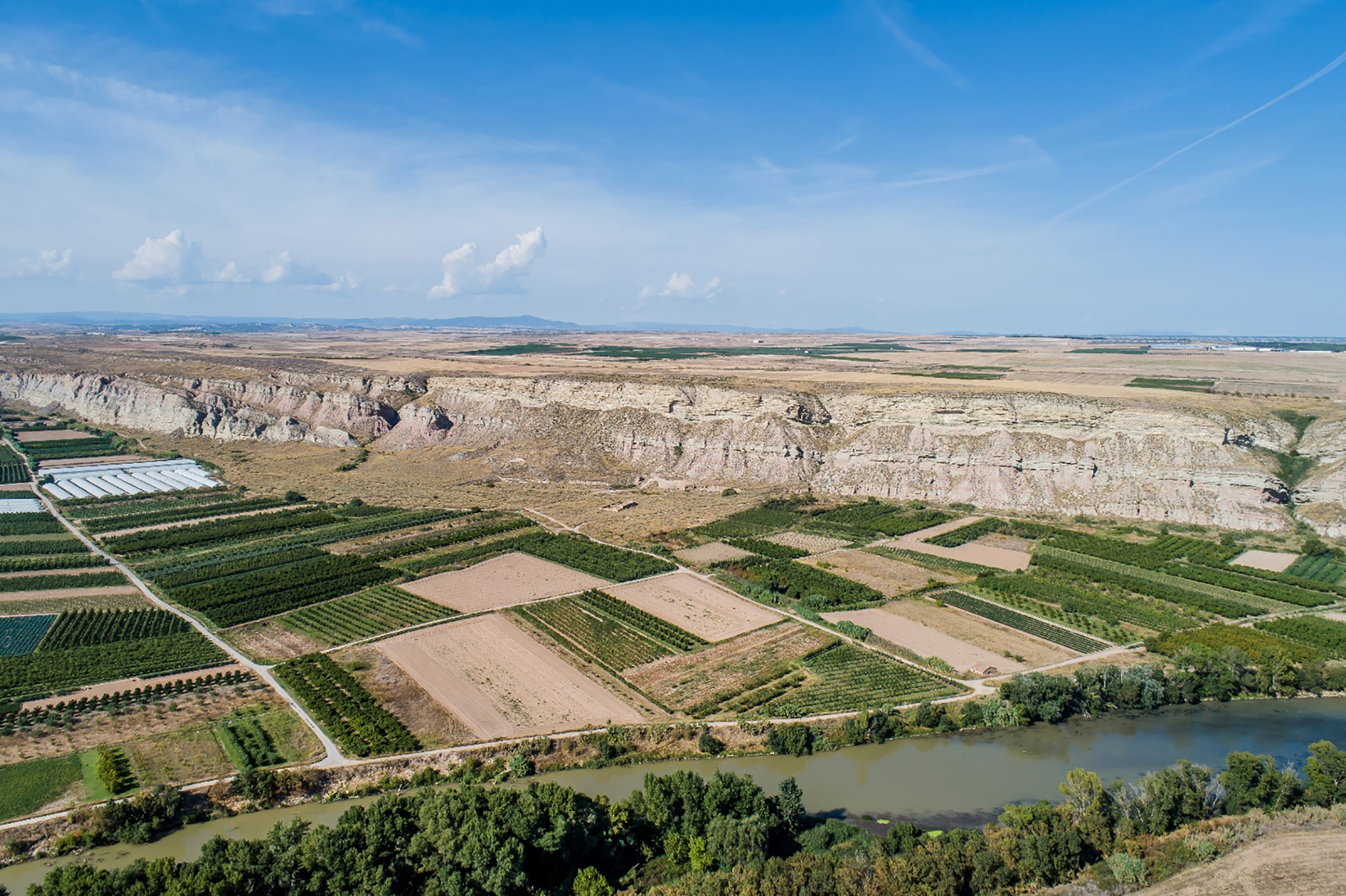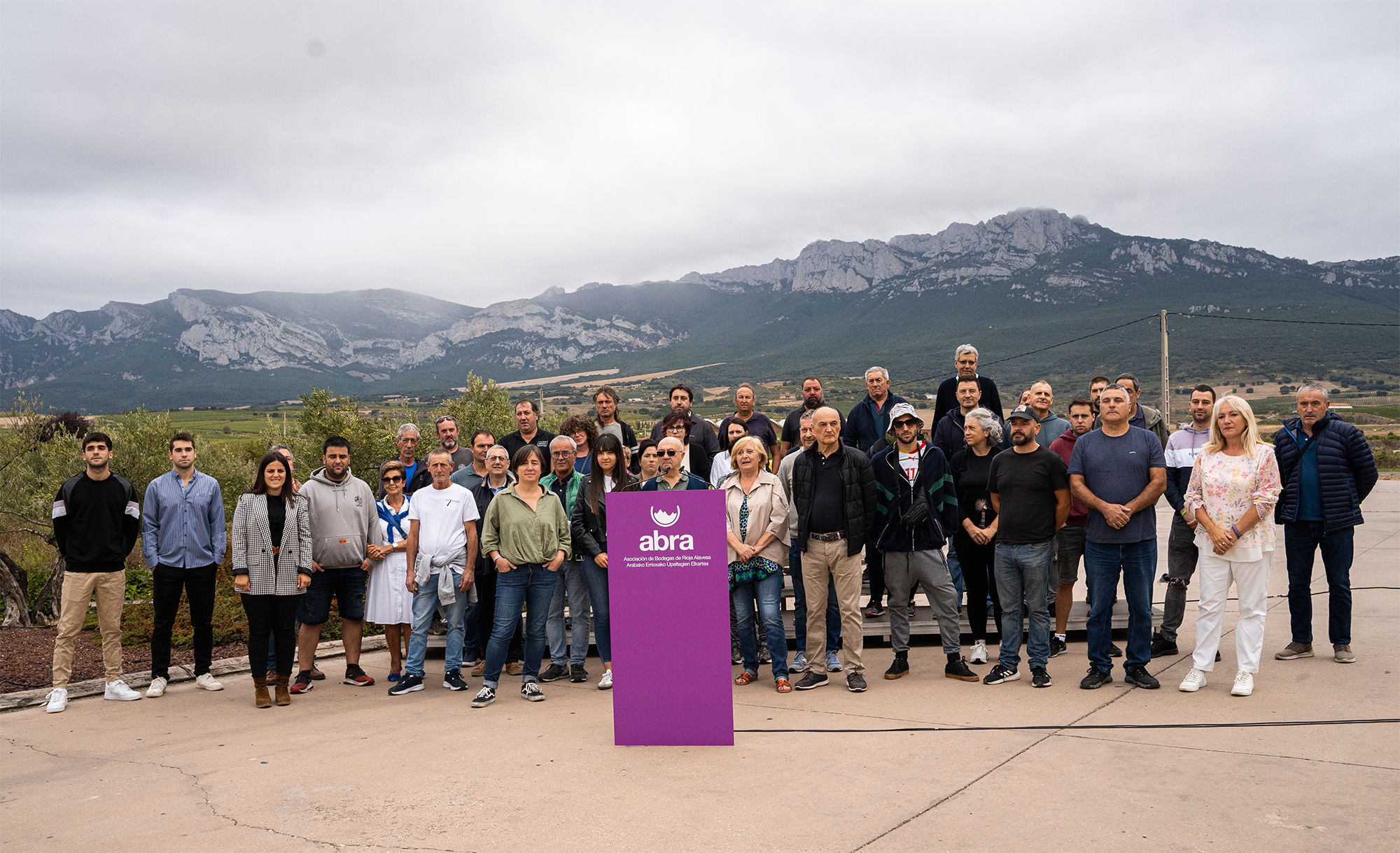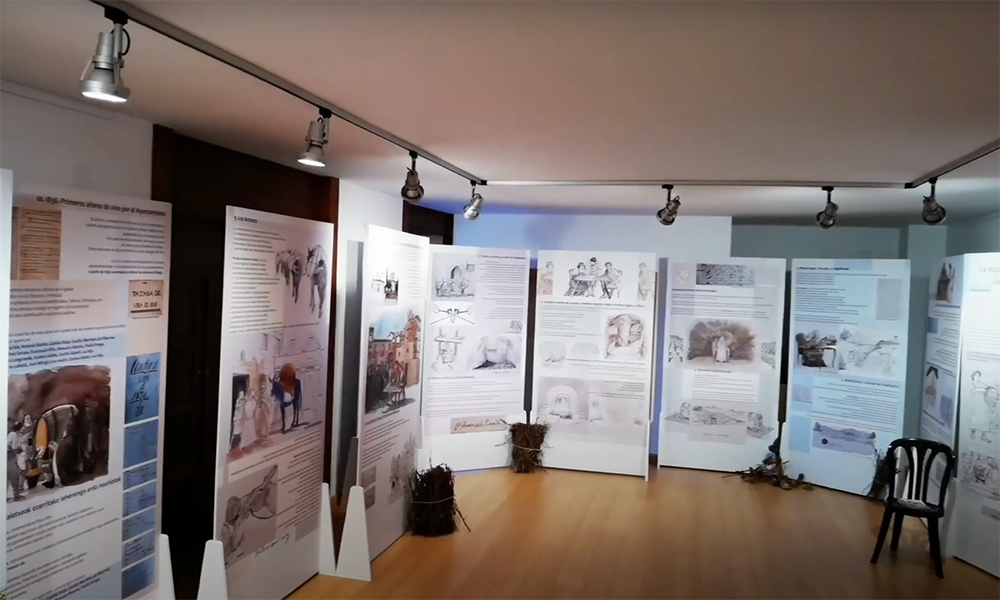Viticulture in Álava: reclaiming the smallness, driving the change of model
- On Sunday, Moreda hosted the XXIX edition of the Festival de la Vendimia de Álava, which is held this Sunday. Days before, the Asociación de Bodegas de Rioja Alavesa, ABRA, appeared to alert once again to the “grave crisis” that the wine industry of Rioja Alavesa is experiencing, to demand a change of model and to announce a new campaign to unlink the wine of Rioja Alavesa from the Designation of Origin Rioja. Above all, ARGIA has spoken to the still life Itxaso Companion and the president of the Abra. Under the bondage of the large wineries has drawn the difficult situation of winemaking, but the association has proposals to liberate it.

A few days later, the next weekend will begin the white harvest in Rioja Alavesa and a week later that of the black grape. Company has explained that this year’s grape production has gone “very well” in Rioja Alavesa: “We will receive less but of very good quality.” Precisely, the councillor for Food, Rural Development, Agriculture and Fisheries, María Barredo, has called to participate in the festival of La Moreda. Consumption of Rioja Alavesa wines has fallen by 4.4% in the last year and it is expected that 123 million fewer litres of wine will be produced this year than last year (from 377 million from 2023 to 254 million euros). But it is not quantity the main problem of viniculture in Álava.
Trying to cover the wallets with paint
Last year, the Basque Government allocated EUR 15.3 million to aid to divert millions of litres of cumulated wine to industrial uses and to cut and throw wine grapes directly into the land. This year, too, millions will be spent on the same task – with the money also spending thousands of hours of peasants’ work, millions of litres of water or polluting fuel. “Yes, once again a huge amount of public money for patches,” Mr Companion said. Today he has defended the need for such aid, but he has criticised the fact that once again no structural decision has been taken, and that is what Álava’s viniculture has been demanding for years. “It’s as if you have a drip on the roof of your house and you want to fix it every year by painting the wall, you’ll disguise for a while, but the drip will come back,” the situation summarizes.
Since 2015, 96 small wineries have been closed in the Rioja Alavesa (from 358 to 262), as explained on Wednesday ABRA in his appearance in Laguardia. Company has explained that the actual data is even worse, as some of the wineries that have ceased their activity maintain the license. Other dated data: In 2017, the grapes were paid to farmers in 1.19 euros, and in 2022 in 071. In particular, the ABRA called for the grapes to face the crisis to be "paid with dignity" and for the area to be "reactivated". "Grapes have been paid to farmers for years below the minimum set by the institutions," says the president of the association.
Since 2015 96 small wineries have been closed in the Rioja Alavesa. In 2017, the grapes were paid to farmers in 1.19 euros and in 2022 in 071.
Small vs Large Wineries
The Company states that the small wineries dominant in Álava and the large ones that dominate the Riojano territory and the designation of origin La Rioja present contradictory models. Small wineries are family businesses, focus on quality and keep people alive: “We live there, we take the children to school, we shop in local shops, we take care of the landscape and from there we also derive tourism.” The big ones are based on quantity. To do so, among other things, they precarious work and buy land everywhere. “Recently a large winery has bought 40 hectares in a nearby town in exchange for an amount that only they can afford, of 40 hectares could live four families, with that model only the company will benefit.” The investment funds have also begun to purchase wineries and land from the Basque Coast, as it has reported it opens.
But the advantages of big business go much further. Some, for example, produce wines in different brands of origin, “and although in La Rioja there are losses that have a positive overall balance, they can be maintained,” others have no other solution to disappear, says the Company. In addition to production, the big ones dominate the distributors, “they are the ones who decide what wine comes.”
The small dominant wineries in Álava and the large wineries that dominate the Riojano territory and the designation of origin La Rioja present opposing models
“There is great confusion in the market,” says Compañía, listing some keys: the large wineries have all their reach and spectacularity, very little; the population does not know what wine is created in the small and large wineries; neither the ecological and economic models behind it; nor distinguishes the Alavese wine and the Rioja wine, as they all remain within the origin brand La Rioja. Moreover, there are many people who believe that Ramón Bilbao, Ardanza or other wines with a Basque name are from the Basque Country, when they do not. It follows that “in the wine consumed in the CAPV only 12% is from the Rioja Alavesa”.
The origin mark Vineyards of Álava and beyond
For years, the Viña Alavesa sector has been claiming its own origin mark. The judicial route is still blocked in the CAV courts, where there are also seven victims. “Last year we were told that the resolution could reach the beginning of the year, then before the summer, after the arrival of the summer…”, says the Company. ABRA announced in its appearance a new path “parallel” to the creative path, which will be “an umbrella for all”, because within ABRA there are differentiated but there are also those who want to continue within the La Rioja saga. The main objective is for citizens, consumers, to know that Álava’s wine is the one in front and the model behind it.
The wine sector of Álava is experiencing “one of the most serious crises of recent decades”, but the president of the ABRA speaks with optimism and proposals. On September 25, the new Euskal Telebista channel will be presented in the market of Vitoria-Gasteiz. “The new campaign will be laostia,” he said with enthusiasm to ARGIA.
"Azken urteetan Arabako upategi txikiak desagertzen ari dira. 1995ean 700 inguru izatetik, gaur egun 200 eta gutxi gelditzen gara", adierazi du Esti Besak.



















